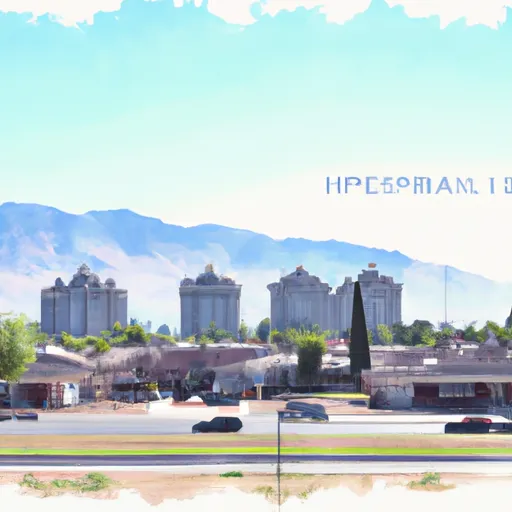-
 Snoflo Premium
Snoflo Premium
Get unlimited access to all our content
With no Ad interruptions! - Start Your Free Trial Login with existing account
Imperial
Eden Index
Climate
7.0
•
Recreation
3.4
•
Community
2.9
•
Safeguard
4.7/10

Imperial, California is a small city located in the Imperial Valley, in the southeastern part of the state. The climate in Imperial is classified as desert, characterized by hot summers and mild winters. The average high temperature in the summer months can exceed 100°F (38°C), while winter highs range from the 60s to low 70s°F (15-23°C). The region receives minimal rainfall, with an average of less than 3 inches per year.
Hydrologically, Imperial is primarily dependent on the Colorado River, which provides water for irrigation and domestic use. The city also benefits from the All-American Canal, a vital water source for the region. The agricultural activities in the area heavily rely on these water sources to sustain crops, including alfalfa, lettuce, and citrus fruits.
Outdoor recreation opportunities in Imperial are abundant. The city is surrounded by vast desert landscapes, making it ideal for activities such as off-roading, hiking, and camping. Nearby, the Salton Sea offers fishing, boating, and bird-watching opportunities. Additionally, the nearby Anza-Borrego Desert State Park provides a picturesque setting for hiking and exploring the unique desert ecosystem. With its favorable climate and proximity to natural attractions, Imperial offers a variety of outdoor activities for residents and visitors to enjoy.
What is the Eden Index?
The Snoflo Eden Index serves as a comprehensive rating system for regions, evaluating their desirability through a holistic assessment of climate health, outdoor recreation opportunities, and natural disaster risk, acknowledging the profound impact of these factors on livability and well-being.
Climate Health Indicator (CHI): 7.0
Imperial receives approximately
81mm of rain per year,
with humidity levels near 74%
and air temperatures averaging around
23°C.
Imperial has a plant hardyness factor of
10, meaning
plants and agriculture in this region tend to thrive here all year round.
By considering the ideal temperature range, reliable water supplies, clean air, and stable seasonal rain or snowpacks, the Climate Health Indicator (CHI) underscores the significance of a healthy climate as the foundation for quality living.
A healthy climate is paramount for ensuring a high quality of life and livability in a region, fostering both physical well-being and environmental harmony. This can be characterized by ideal temperatures, reliable access to water supplies, clean air, and consistent seasonal rain or snowpacks.
Weather Forecast
Streamflow Conditions
Salton Sea
Area Rivers
Salton Sea
Snowpack Depths
Salton Sea
Reservoir Storage Capacity
Salton Sea
Groundwater Levels
Recreational Opportunity Index (ROI): 3.4
The Recreational Opportunity Index (ROI) recognizes the value of outdoor recreational options, such as parks, hiking trails, camping sites, and fishing spots, while acknowledging that climate plays a pivotal role in ensuring the comfort and consistency of these experiences.
Access to outdoor recreational opportunities, encompassing activities such as parks, hiking, camping, and fishing, is crucial for overall well-being, and the climate plays a pivotal role in enabling and enhancing these experiences, ensuring that individuals can engage in nature-based activities comfortably and consistently.
Camping Areas
| Campground | Campsites | Reservations | Toilets | Showers | Elevation |
|---|---|---|---|---|---|
| El Centro NAF Military | None | -42 ft | |||
| Bombay Beach - Salton Sea State Rec Area | None | -226 ft | |||
| Red Hill Marina | 40 | -225 ft | |||
| Slab City | None | 71 ft | |||
| Wiest Lake | None | -157 ft |
Catastrophe Safeguard Index (CSI):
The Catastrophe Safeguard Index (CSI) recognizes that natural disaster risk, encompassing floods, fires, hurricanes, and tornadoes, can drastically affect safety and the overall appeal of an area.
The level of natural disaster risk in a region significantly affects safety and the overall livability, with climate change amplifying these risks by potentially increasing the frequency and intensity of events like floods, fires, hurricanes, and tornadoes, thereby posing substantial challenges to community resilience and well-being.
Community Resilience Indicator (CRI): 2.9
The Community Resilience Indicator (CRI) recognizes that education, healthcare, and socioeconomics are crucial to the well-being of a region. The CRI acknowledges the profound impact of these elements on residents' overall quality of life. By evaluating educational resources, healthcare accessibility, and economic inclusivity, the index captures the essential aspects that contribute to a thriving community, fostering resident satisfaction, equity, and social cohesion.

